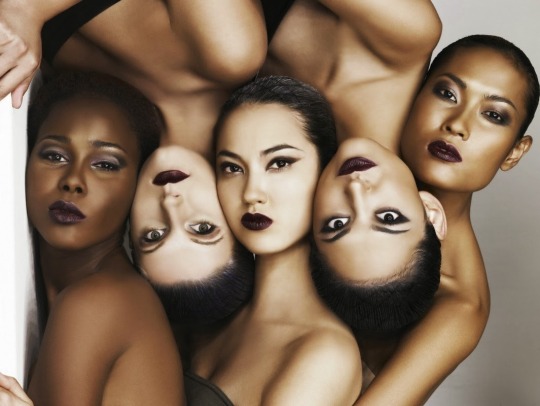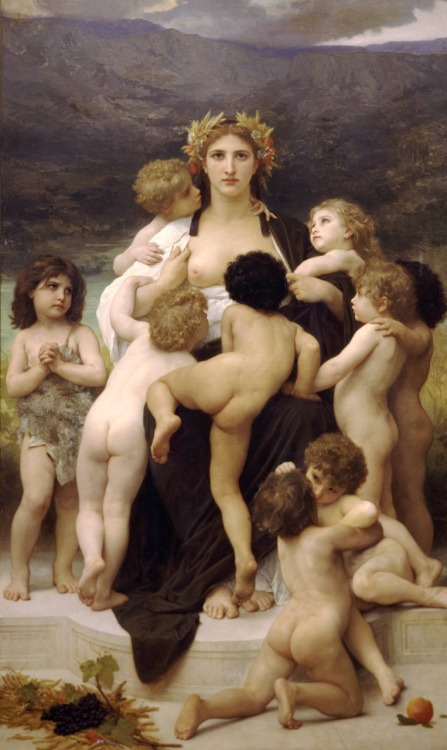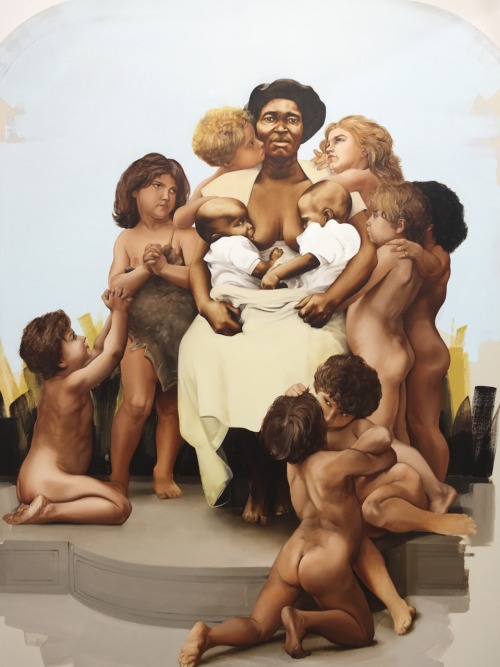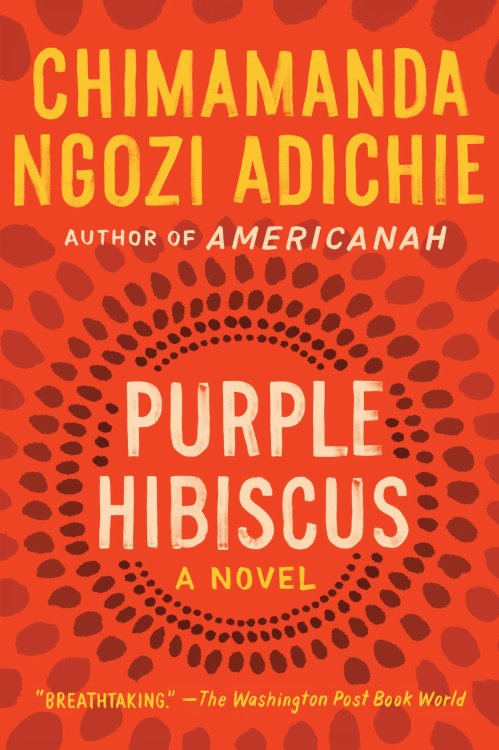#postcolonialism
READING LIST: Postcolonial Rewritings of the Imperial Canon
After my reviews of Wide Sargasso Sea by Jean Rhys (here) and On Beauty by Zadie Smith (here), I decided to dedicate a full post to postcolonial rewritings and reworkings of the Western literary canon.
These are some works that I could think of off the top of my head, but if there are any more out there that I should know about, please let me know in the comments!
Post link
Decolonizing art history: Meleko Mokgosi remixes Bouguereau’s 1883 Africa allegory “The Motherland” (main image on Wikipedia’s postcolonialism page). Democratic Intuition, Lerato: Agape I, a 2016 oil-on-canvas, is in the Botswana-born, New York-based artist’s show at Jack Shainman Gallery.
Post link
Essay topic
In what way does Sydney and her family’s arrival in Hawaii in Rip Girls constitute an act of colonization? How does Sydney navigate her dual identity as both colonizer and colonized?
Post link
Claude McKay, Romance in Marseille (2020)
Wide open in the shape of an enormous fan splashed with violent colors, Marseille lay bare to the glory of the meridian sun, like a fever consuming the senses, alluring and repelling, full of the unending pageantry of ships and of men.
Magnificent Mediterranean harbor. Port of seaman’s dreams and their nightmares. Port of the bums’ delight, the enchanted breakwater. Port of innumerable ships, blowing out, booming in, riding the docks, blessing the town with sweaty activity and giving sustenance to worker and boss, peddler and prostitute, pimp and panhandler. Port of the fascinating, forbidding and tumultuous Quayside against which the thick scum of life foams and bubbles and breaks in a syrup of passion and desire.
A noted figure of the Harlem Renaissance, McKay had an itinerant career—travelling widely in Europe and North Africa, and eventually forsaking the Marxism of his early years for Catholicism. This vibrant satire, begun in 1929, later abandoned, and now published for the first time, follows a West African stowaway on a boat from Marseille to New York. Discovered by the crew and shut in a freezing room, he loses both legs to frostbite, but, in a twist based on real cases, wins a large settlement from the shipping company and is able to return to Marseille a rich man. Encompassing a huge diversity of perspectives—including memorable evocations of Marseille’s black Marxist scene and of its queer subculture—the novel remains radical in its clear-eyed assessment of racism and unsentimental depiction of disability.
“Briefly Noted,” The New Yorker (March 23, 2020)
Post link
C.L.R. James, Mariners, Renegades, & Castaways: The Story of Herman Melville and the World We Live In (1953)
A great part of this book was written on Ellis Island while I was being detained by the Department of Immigration. The Island, like Melville’s Pequod, is a miniature of all the nations of the world and all sections of society. My experience of it and the circumstances attending my stay there have so deepened my understanding of Melville and so profoundly influenced the form the book has taken, that an account of this has seemed to me not only a natural but necessary conclusion.
Post link
Chimamanda Ngozi Adichie, Purple Hibiscus (2003)
Things started to fall apart at home when my brother, Jaja, did not go to communion and Papa flung his heavy missal across the room and broke the figurines on the étagère. We had just returned from church. Mama placed the fresh palm fronds, which were wet with holy water, on the dining table and then went upstairs to change. Later, she would knot the palm fronds into sagging cross shapes and hang them on the wall beside our gold-framed family photo. They would stay there until next Ash Wednesday, when we would take the fronds to church, to have them burned for ash. Papa, wearing a long, gray robe like the rest of the oblates, helped distribute ash every year. His line moved the slowest because he pressed hard on each forehead to make a perfect cross with his ash-covered thumb and slowly, meaningfully enunciated every word of “dust and unto dust you shall return.”
Post link

By Alfe Azad
A common refrain I have heard throughout my childhood from the many women in my life, my mother, aunts, older female cousins, was for me to ‘stay indoors’ since I was ‘already too dark’. When my mother was born she was the pride and joy of my grandfather because the doctors told him that they had never seen an infant as pink as my mother. My father chose to marry my mother because, as darker pigmented man himself, he wanted to give his future children a head start by marrying someone fair-skinned.
Throughout my primary schooling my family was lucky enough to travel to Bangladesh every summer, it was during these trips my mother would stock up on a skin lightening cream called “Fair and Lovely” for both her and myself. Whenever I would find myself at family gatherings or other social outings with fellow South Asian women, it would never be too long before the conversation turned to beauty and women began complimenting the fair skin of one another and offering helpful information to those afflicted with darker skin. In searching for potential brides for my male cousins, fair skin, not the bride’s accomplishments or sense of character, was prioritized. Simply put, fair skin was good and dark hued skin was something you had to constantly make-up for and attempt to change. Retrospectively assessing these instances it becomes clear that the opinions of the people in my family and families across South Asia are informed by a deep-rooted history with colorism.
South Asia (India, Bangladesh, Pakistan, Bhutan, Nepal, Sri Lanka) has developed their issue with colorism over a long period of time, starting with the invasion of the light-skinned Aryans and concluding with the reign of the British Raj. The traumatic rippling affects of these historical occurrences are still felt today through the internalized oppression of the indigenous population that these invasions descended upon. Having to witness social and political power be given to outside forces whose physical bodysuit was so vastly different from the native population it ruled over only naturally leads to self-questioning and desire to emulate those in power.
To this day South Asians hold the belief that fairness is equated with more positive attributes i.e., intelligence, more attractive, wealthier, etc., and this attitude is reflected in the pervasive popular culture of South Asia. Bollywood being such a massive industry and having so much influential pull over the South Asian population, continues to perpetuate the idea of fairness being preferable by continuously celebrating and casting fair skinned actresses. Furthermore, the idea that fairness is the preferred shade is evidenced by the vast amount of skin lightening products that exist for both men and women and are touted and affirmed by their association within the Bollywood culture. South Asian people, and women more so, are inundated with images of fairness and the belief that a lack of melanin is somehow associated with success. South Asians have seen power given to light skinned individuals for centuries, and today that power continues to manifest itself in the higher echelons of South Asian culture, where, more often than not, people in positions of power continue to be fair skinned. It is high time we recognize and value our people beyond the shade of their skin. South Asians as a community are vibrant and brilliant regardless of the hue of our skin. My intelligence, sass, and creativity doesn’t stem from my lack of melanin, rather it has flourished in the responses to it.
As I’ve grown into my own and have been equipped with the specific language and education surrounding the history of oppression of people of color and the evolution of the feminist movement, I have come to understand the importance of my racial and cultural heritage. It has come to the forefront of my consciousness and, along with the lens of feminism, has done much to shape how I perceive my own experiences and the experiences of others around me, by recognizing that my place in the world starts with affirming that I am a woman of color. I make the distinction to say woman of color, and not woman and person of color, because too often I feel these two labels become disjointed and it is imperative to recognize that women of color are recognized otherwise we are inevitably perpetuating the erasure of women of color (hereafter known as WoC) altogether. It is through this lens that I am able to acknowledge the daily microagressions and societal challenges faced by WoC, whether from individual or systemic forces. Colorism has been continuously documented as a common problem amongst nations that have gone through extensive periods of European colonization, including the Indian subcontinent from which I am a proud product of.
[photo source: www.popfn.com]
Alfe Azad is a 28 year old grad of NYU Steinhardt’s Educational Theatre program. At NYU she focused on her interest in Theatre of the Oppressed and the intersection of arts and social justice. Her work culminated in a literature review thesis on the issue of colorism within women in the South Asian community. In addition to her post-graduate degree from NYU, she received her BA in Theatre and English literature at California State University Northridge. Alfe is currently a Teaching Artist in the city with three different organizations, Opening Act, The Leadership Program, and Wingspan Arts. She is originally from New York but has lived, studied, and worked in Los Angeles for the past 13 years. She is also a practicing actor, credits include Dunyazade in Arabian Nights and Peaseblossom in A Midsummer’s Night Dream. Alfe also works in technical theatre, most recently helping design costumes for NYC’s The Secret Theatre’s production of Through the Glade. Find her on Twitter @alfeazad
just saw a post that said poorer countries aren’t under-developed, they’re over-exploited and honestly, i love that use of language, to put the onus on colonialism and imperialism. can we please start saying that more?
Saw another that said they’re not “developing”, they’re “recovering from colonialism”.
I’d love for us to use both (this and over-exploited), as they’re both equally accurate
I’ve said it before and I’ll say it again:
HOW you talk about a subject can reshape the WAY we think about that subject.
They’re not developing, they’re recovering. They’re not poor, they’re exploited. They’re not third-world, they’re subjugated.







